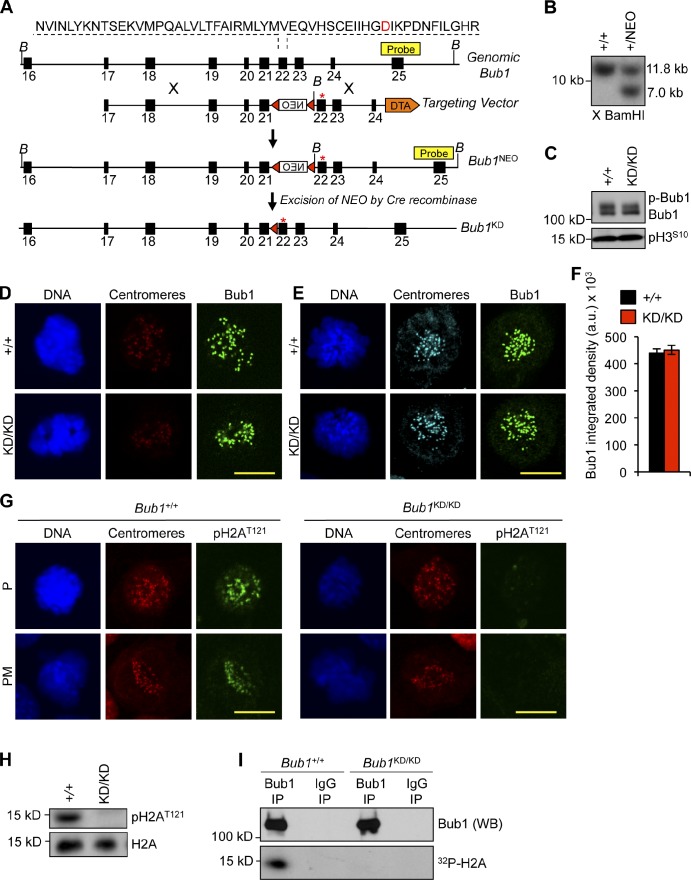Figure 1.
Generation of Bub1 kinase–deficient mice. (A) Bub1 targeting strategy. Bub1 locus (+), D892N targeting vector, targeted allele (Bub1NEO), the targeted allele after Cre recombination (Bub1KD), BamHI (B) restriction sites, loxP sites (red triangles), and the Southern probe are indicated. DTA, diphtheria toxin A. Asterisks mark the D892N point mutation. (B) Southern blot of targeted ES clones digested with BamHI. X, digested. (C) Western blot of lysates from nocodazole-treated shake-off MEFs probed for Bub1 and pH3S10. (D) Immunostaining of Bub1+/+ and Bub1KD/KD MEFs. (E) Immunostaining of monastrol-treated Bub1+/+ and Bub1KD/KD MEFs. (F) Quantification of Bub1 staining shown in E from three independent MEF lines. Error bars indicate SEM. (G) Immunostaining of Bub1+/+ and Bub1KD/KD MEFs. (H) Western blot of lysates from taxol blocked MEFs probed for pH2AT121 and histone H2A. (I) Bub1 was immunoprecipitated from taxol-blocked Bub1+/+ and Bub1KD/KD immortalized MEFs and incubated with histone H2A in the presence of γ-[32P]ATP. a.u., arbitrary unit; NEO, neomycin; KD, kinase dead; IP, immunoprecipitation; WB, Western blot. Bars, 10 µm.

